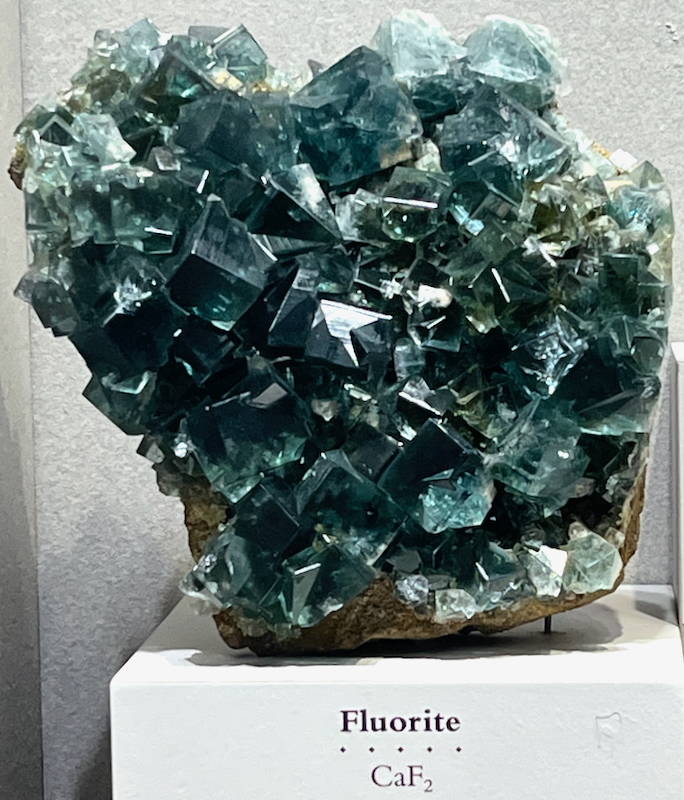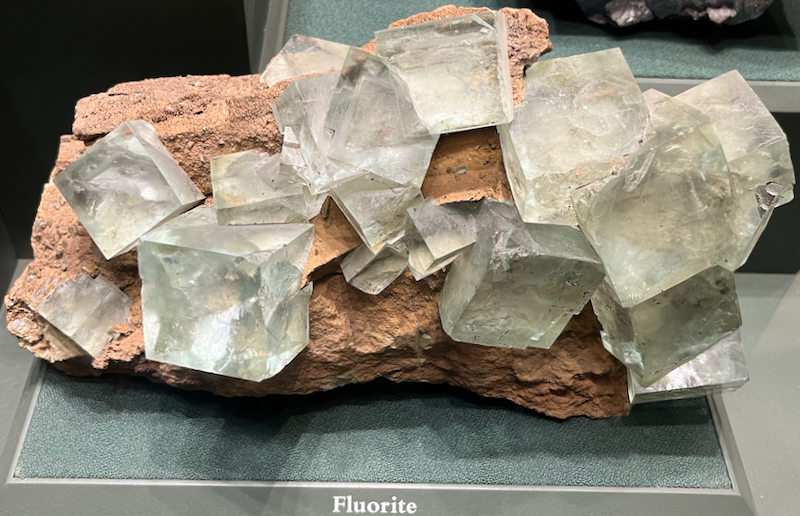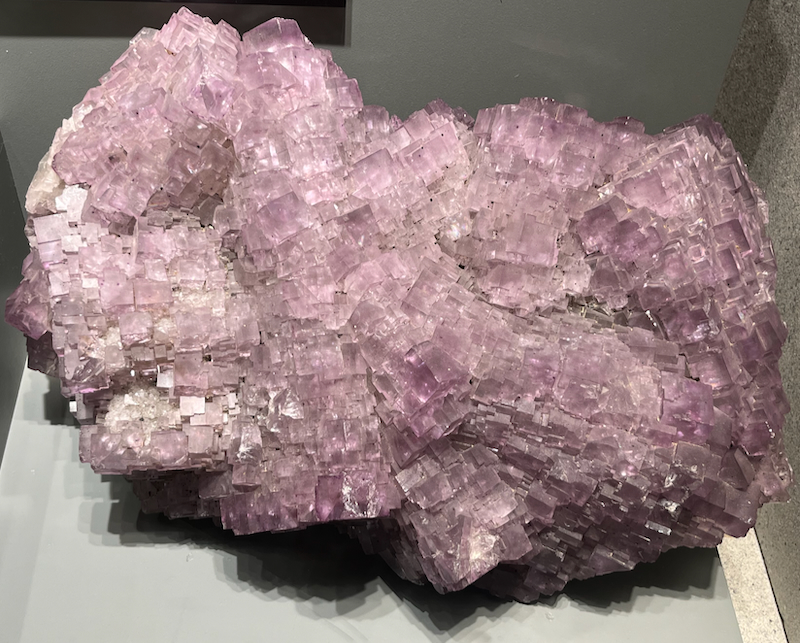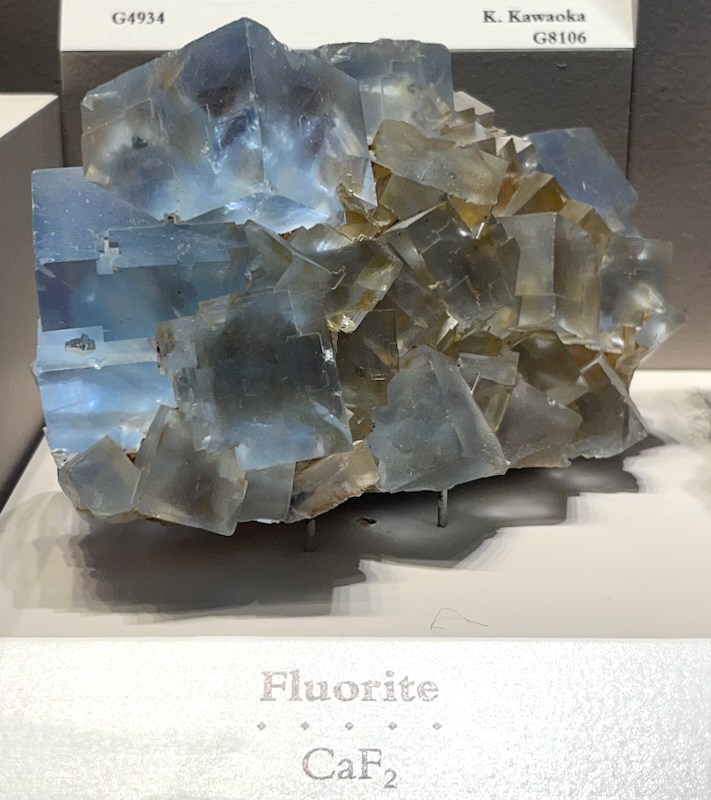Fluorite
Fluorite is one of the most collected minerals for a good reason: it occurs in a wide variety of colors that look, but definitely don’t taste, like candy. One fluorite mine in British Columbia, Canada, is even named the Rock Candy Mine for its delicious-looking fluorite crystals. Other fluorite features make it even more collectible, as well as very useful in industry. For one, it often forms in cool-looking cubes that are sometimes made up of smaller cubes, and the crystals often have different layers or “zones” in different colors. On the other hand, some fluorite when it breaks, it doesn’t shatter; instead, the pieces are perfect octahedrons, which look like two pyramids with their bases stuck together. You can often find these for sale at rock shops in green or purple. Speaking of shattering, fluorite is a pretty soft mineral, so it breaks easily, and it’s easy to dissolve in almost any acid. However, what’s weird is that fluorite itself can be used to make an acid—hydrofluoric acid—that’s so strong, it can dissolve just about anything…except fluorite! Aside from making acid, another major use of fluorite is in the smelting process, where metal ore is melted down and processed into pure, usable metal, such as steel. Most metal ores don’t melt unless they’re extremely hot, and when they do, the melted metal can be thick and sludgy. But if you add fluorite to the smelter with the ore to act as what’s called a “flux,” it helps the melted metal to flow more smoothly. Along with being collectible and useful in manufacturing, fluorite was the origin of the word fluorescent. In 1852, a scientist named Stokes discovered that the fluorite he had would glow with a blue light when the ultraviolet (UV) light from a prism’s rainbow shone on it. He created a new word using part of the word fluorite, and now all minerals that respond to UV light are called “fluorescent.” Not all fluorite glows in UV light, but when it does, it helps you tell it apart from other minerals. As you can see, fluorite is a key mineral for rock lovers of all types!
| Formula | Group or Type | Shape | Hardness | Specific Gravity | Streak | Luster |
|---|---|---|---|---|---|---|
| CaF2 | — | Isometric | 4 | 3.175–3.56 | White | Vitreous to dull |





